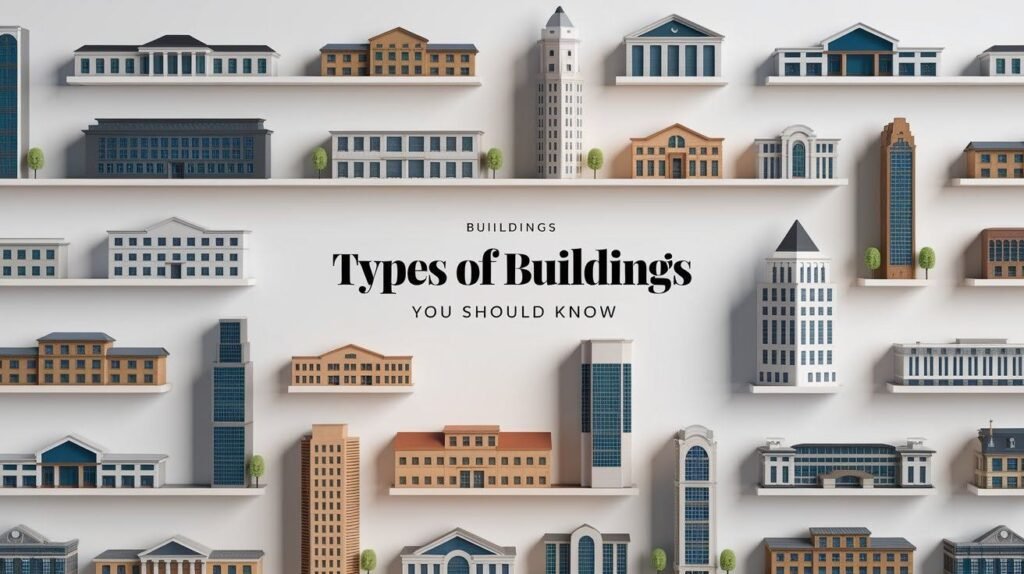Buildings shape our daily lives more than we realize. From the house you wake up in to the office where you work, each structure serves a specific purpose.
Yet most people don’t know the differences between various building types or why these distinctions matter. This guide breaks down the main categories of buildings you encounter every day.
We’ll cover residential, commercial, industrial, and institutional structures. You’ll learn about their unique features, materials, and functions. Why does this matter? Understanding building types helps you make better decisions.
If you’re buying property, planning construction, or simply curious about architecture, this knowledge proves valuable. We’ve researched building codes, consulted architects, and studied real examples.
Our goal is giving you clear, accurate information you can trust and use. By the end, you’ll recognize different building types and understand what makes each one special. No confusing jargon – just straightforward explanations.
Types of Buildings Based on Usage
Buildings serve different purposes, and understanding these differences helps you recognize what makes each type special. Here’s how we categorize buildings by their main use.
1. Residential Buildings
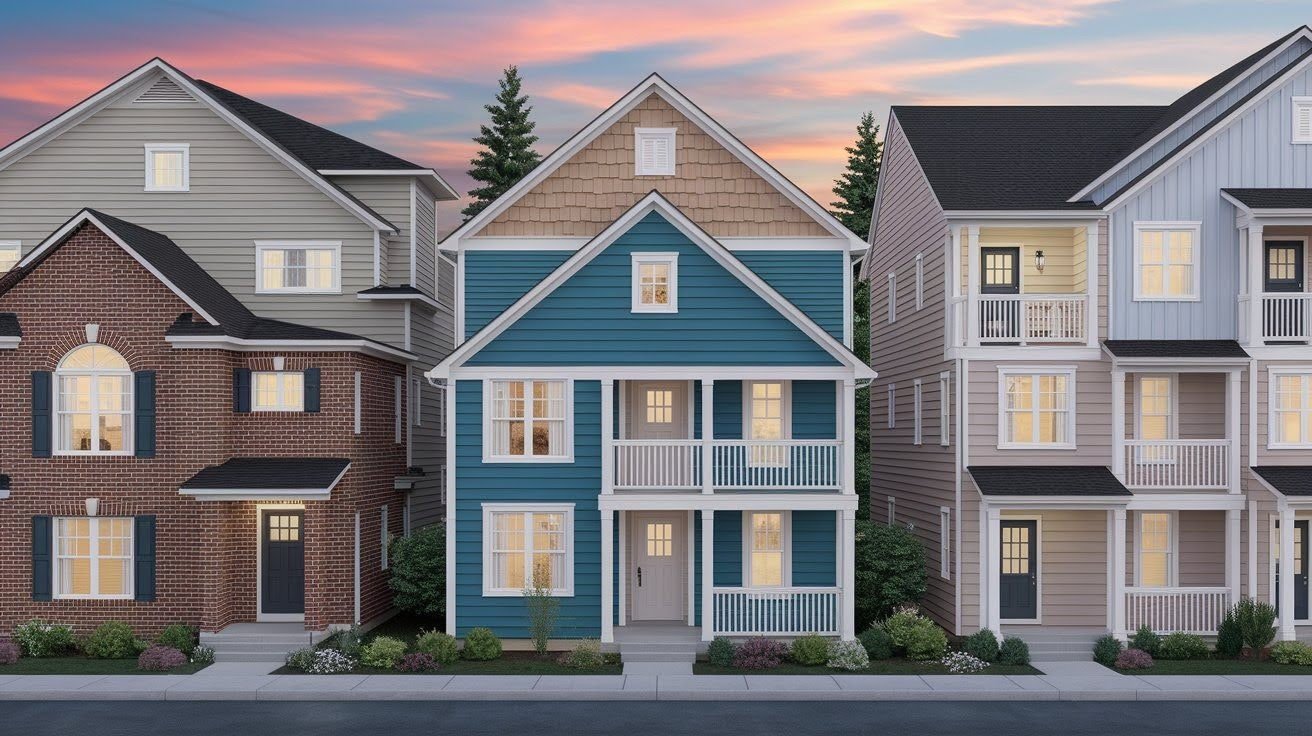
These are the places where people live and call home. Residential buildings include single-family houses, apartment complexes, townhouses, and condominiums.
The main goal is creating comfortable living spaces. Architects focus on natural light, privacy, and layouts that work for families. You’ll find features like kitchens, bedrooms, living rooms, and bathrooms designed for daily life.
Materials often include wood framing, brick, or vinyl siding. Insulation keeps temperatures comfortable year-round. Windows are positioned to bring in sunlight while maintaining privacy from neighbors.
2. Commercial Buildings
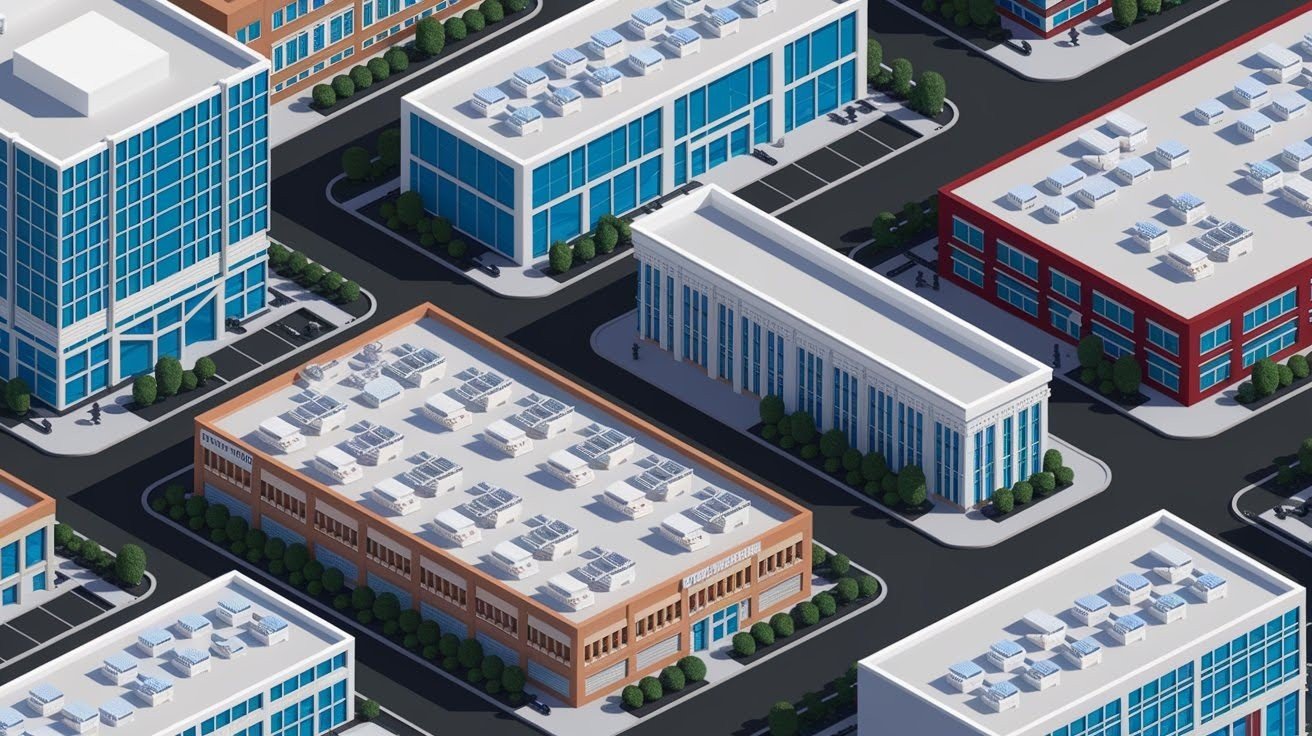
Commercial structures house businesses that serve customers and clients. This category includes office towers, shopping centers, restaurants, hotels, and retail stores.
These buildings prioritize accessibility and customer flow. Wide entrances, clear signage, and open floor plans help people move around easily. Many have large windows to display products or create welcoming atmospheres.
Parking lots, loading docks, and storage areas support business operations. Fire safety systems and accessibility features meet strict building codes.
3. Industrial Buildings
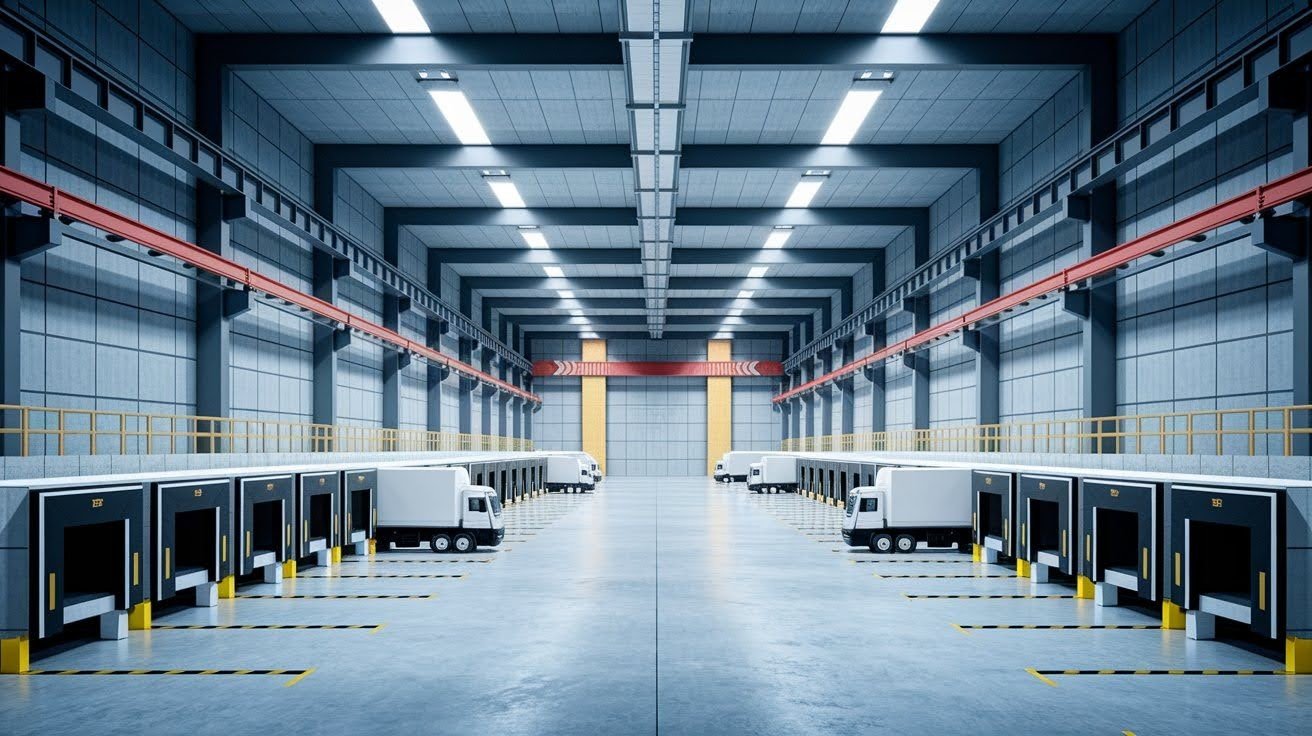
Industrial facilities focus on production, storage, and manufacturing. Warehouses, factories, processing plants, and distribution centers fall into this category.
Function comes first in industrial design. High ceilings accommodate large equipment. Concrete floors handle heavy machinery and constant traffic. Loading docks allow trucks to deliver materials efficiently.
These buildings use steel and concrete construction for strength and durability. Ventilation systems manage air quality, while specialized electrical systems power heavy equipment.
Types of Buildings Based on Architectural Styles
Architecture tells the story of different time periods and cultural values. Each style reflects the technology, materials, and ideas popular when it was built. Here are the main architectural approaches you’ll see today.
4. Traditional Architecture

Traditional buildings connect us to history and cultural heritage. These structures include old churches, historic courthouses, temples, and grand mansions built decades or centuries ago.
Craftsmen used locally available materials like stone, wood, and clay. You’ll notice detailed carvings, ornate decorations, and handmade elements that took months to complete. Thick walls, steep roofs, and small windows helped buildings withstand weather without modern technology.
Many traditional buildings feature symmetrical designs and repeated patterns. Columns, arches, and decorative moldings create visual interest. These structures often age gracefully, developing character over time.
5. Modern Architecture
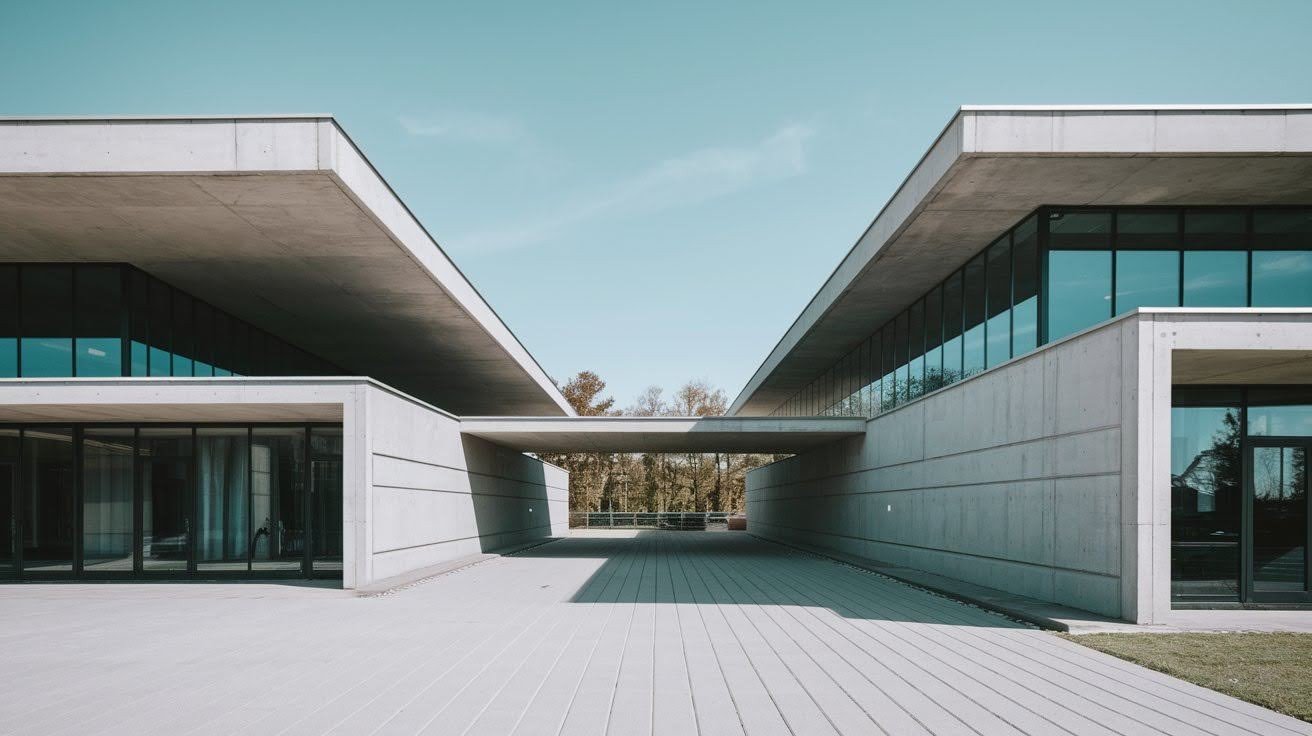
Modern buildings focus on simplicity and function over decoration. This style became popular in the mid-1900s as new construction methods developed.
Clean, straight lines define modern architecture. Large windows bring in natural light while steel frames support open floor plans. You won’t find unnecessary decorations or complex details.
Common materials include steel beams, concrete, and expansive glass panels. Flat roofs and geometric shapes create bold, simple forms. The goal is creating efficient spaces that serve their purpose without excess.
6. Postmodern Architecture
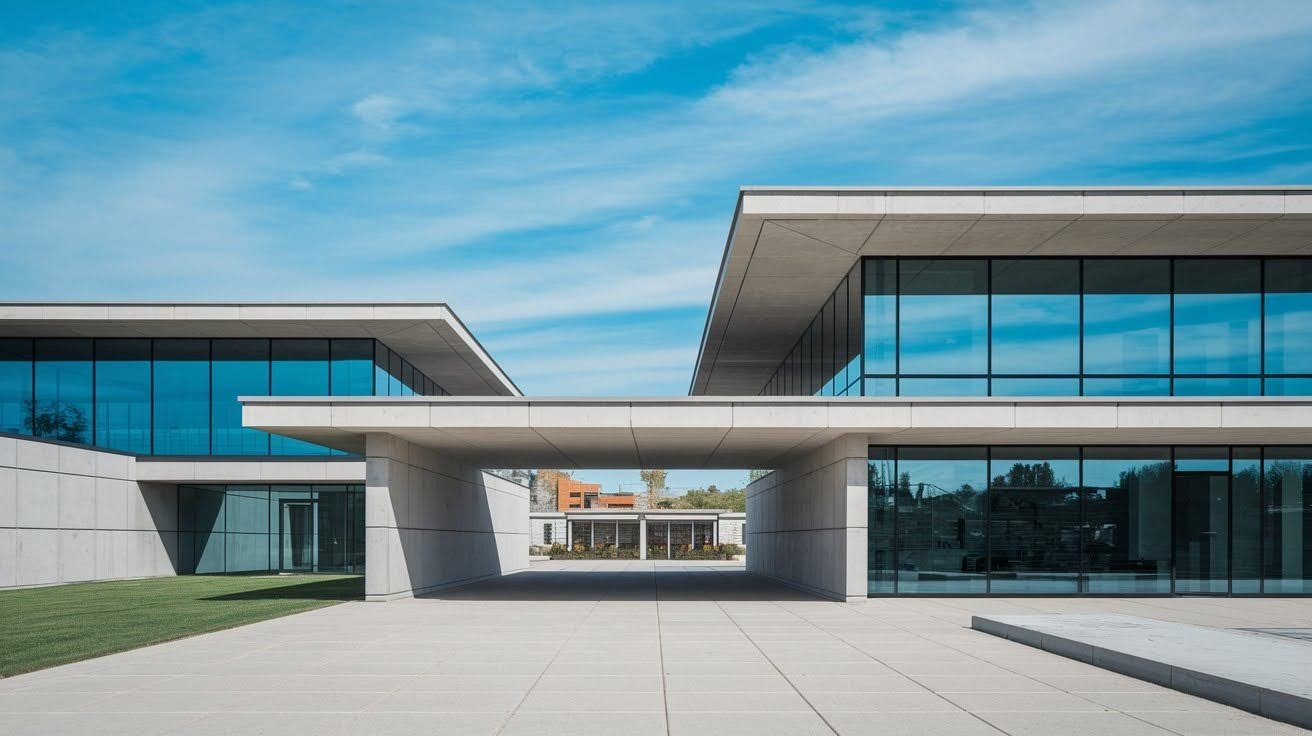
Postmodern buildings mix elements from different time periods and styles. Architects combine traditional features with modern materials and techniques.
These structures often surprise viewers with unexpected colors, shapes, and combinations. You might see classical columns made from modern materials or historic details on contemporary buildings.
This style allows creativity and personal expression. Buildings may feature curved walls, bright colors, or unusual proportions. The result is structures that stand out and make people think about what buildings can be.
Types of Buildings Based on Construction Materials
The materials used to build a structure determine its strength, appearance, and lifespan. Different materials work better for specific purposes and climates. Here’s how construction materials shape the buildings around us.
7. Wooden Structures
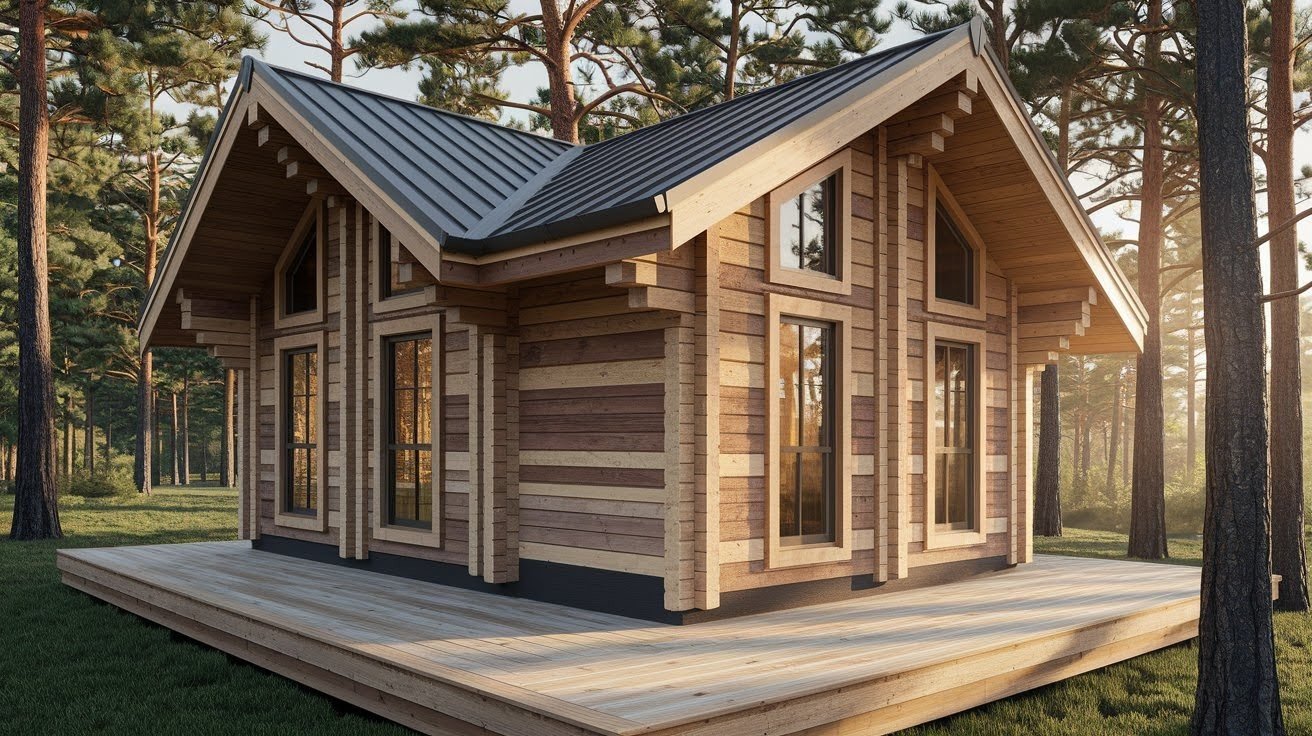
Wood remains one of the most popular building materials, especially for homes. You’ll find wooden buildings throughout areas with abundant forests, where lumber costs stay reasonable.
Common wood types include pine for framing, cedar for exterior siding, and oak for flooring and trim. Each wood species offers different benefits. Pine grows quickly and costs less. Cedar resists insects and weather naturally. Oak provides exceptional strength and beauty.
Wood buildings feel warm and comfortable. The material insulates well and creates cozy living spaces. However, wood requires regular maintenance to prevent rot, termites, and fire damage. Proper treatment and construction techniques help wooden structures last for generations.
8. Concrete Buildings

Concrete creates some of the strongest, most durable buildings in the world. This material works well for homes, offices, factories, and infrastructure projects.
Concrete resists fire, insects, and severe weather better than most alternatives. It won’t burn, rot, or get eaten by termites. These qualities make concrete buildings safer and longer-lasting.
The material also offers design flexibility. Builders can pour concrete into almost any shape or form. This allows for curved walls, unique angles, and creative architectural features. Concrete buildings often last 50-100 years with minimal maintenance.
9. Steel Frame Buildings
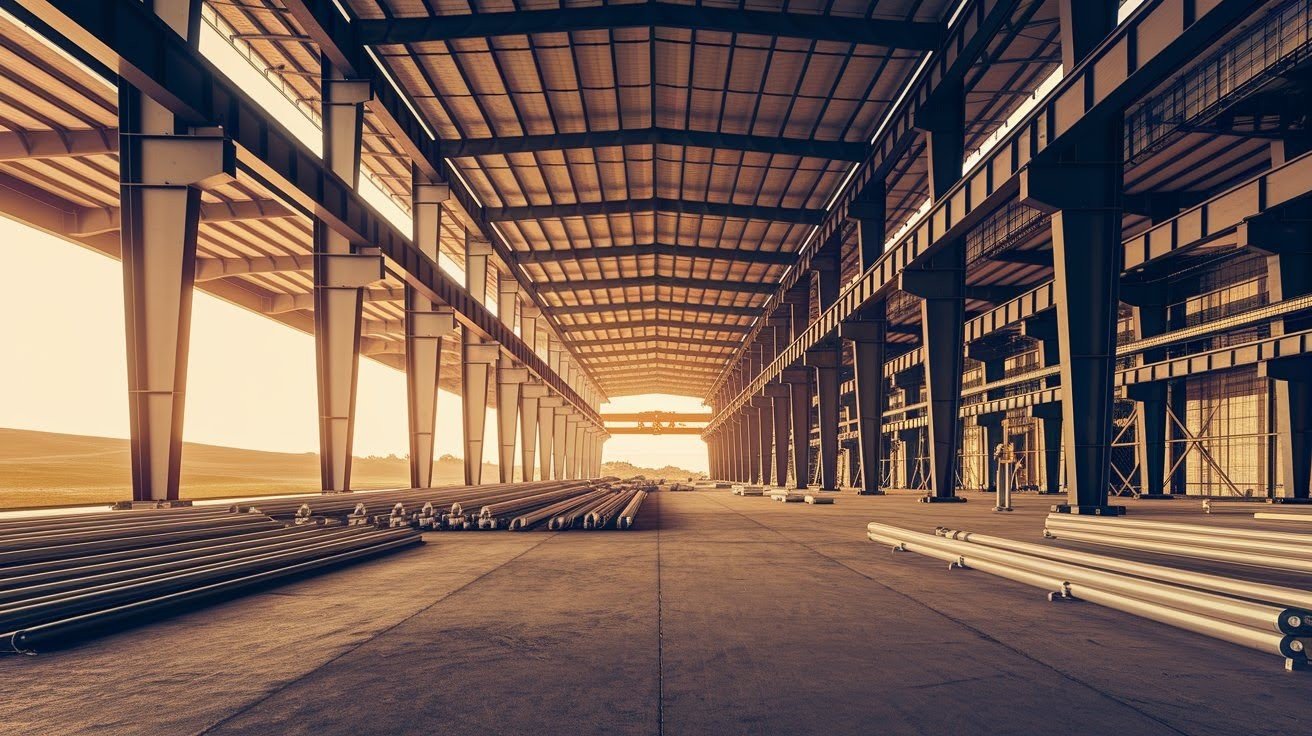
Steel frames support many commercial and industrial buildings. This material allows builders to create large, open spaces without internal support columns.
Steel construction happens quickly compared to other methods. Prefabricated steel pieces arrive ready to assemble, reducing construction time significantly. This speed saves money and gets buildings occupied faster.
Steel frames also handle heavy loads and resist earthquakes better than many alternatives. The material bends rather than breaks under stress. This flexibility makes steel buildings safer in areas with seismic activity or high winds.
Types of Buildings Based on Size
Building height affects everything from construction methods to daily life inside the structure. Different heights serve different purposes and work better in specific locations. Here’s how size shapes the buildings we use.
10. Low-Rise Buildings
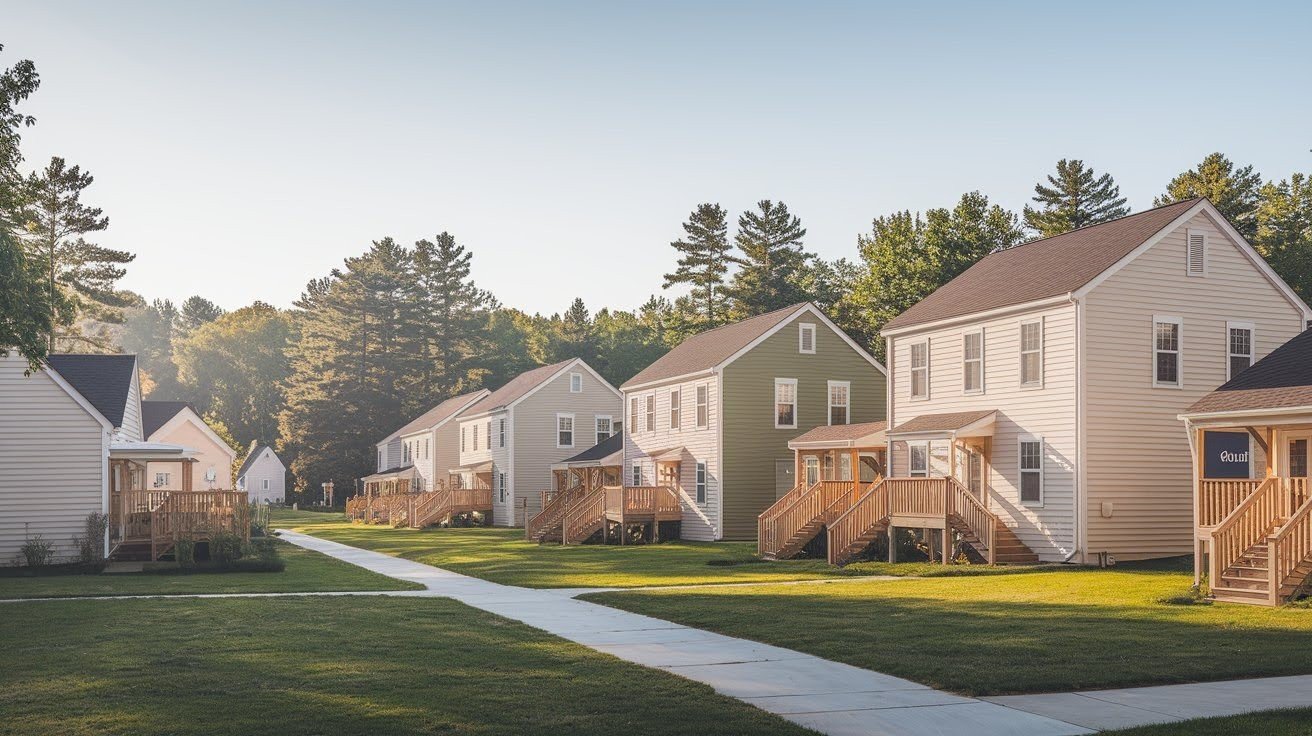
Low-rise buildings stand one to three stories tall. These structures form the backbone of suburban neighborhoods and small business districts.
Most single-family homes fall into this category. You’ll also find small apartment buildings, strip malls, and local offices at this height. Low-rise buildings feel more human-scale and accessible.
Construction stays simpler with fewer stories. Standard wood framing works well, and costs remain reasonable. People can easily walk upstairs without elevators. Emergency exits are straightforward, and maintenance crews can reach everything with basic equipment.
These buildings blend well with surrounding neighborhoods. They don’t block sunlight from nearby properties or create wind tunnels at street level.
11. Mid-Rise Buildings
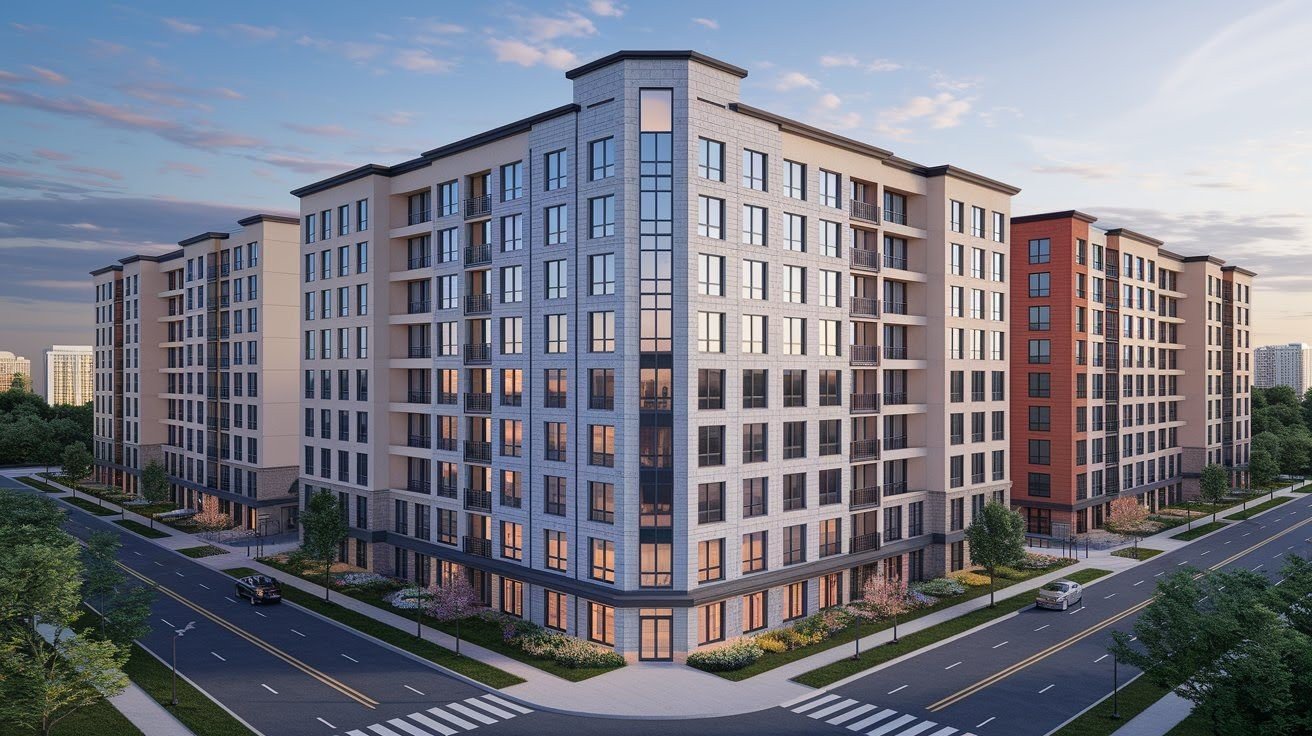
Mid-rise structures reach four to ten stories high. These buildings are common in growing cities and dense suburban areas.
You’ll find mid-rise apartment complexes, medium-sized office buildings, and some hotels at this height. They offer more space than low-rise buildings while avoiding the complexity of skyscrapers.
Mid-rise buildings usually need elevators for upper floors. Construction requires stronger materials and more planning than low-rise projects. However, they still use conventional building methods and equipment.
This height works well in urban areas where land costs more. Buildings can house more people or businesses on the same plot of ground.
12. High-Rise Buildings
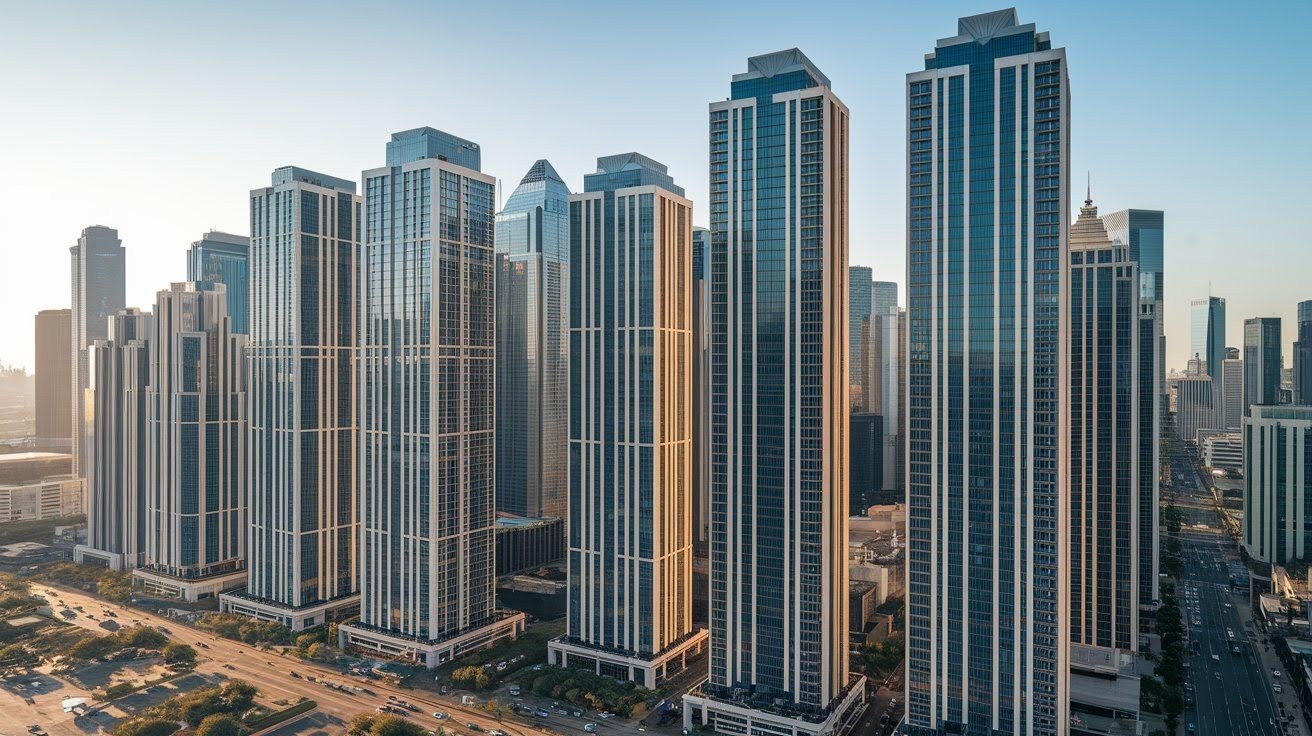
High-rise buildings tower ten stories or higher. Skyscrapers, luxury condominiums, and major office complexes dominate city skylines at these heights.
These structures require specialized engineering and construction techniques. Steel or concrete frames support the massive weight. High-speed elevators become essential for moving people efficiently.
High-rise buildings maximize land use in expensive urban areas. They can house thousands of people or workers on a single city block. However, construction costs increase significantly with height due to specialized materials, equipment, and safety requirements.
Special-Purpose Buildings
Some buildings serve very specific functions that require unique designs and features. These structures are built with particular activities and users in mind. Here are the main types of special-purpose buildings you’ll encounter.
13. Educational Facilities
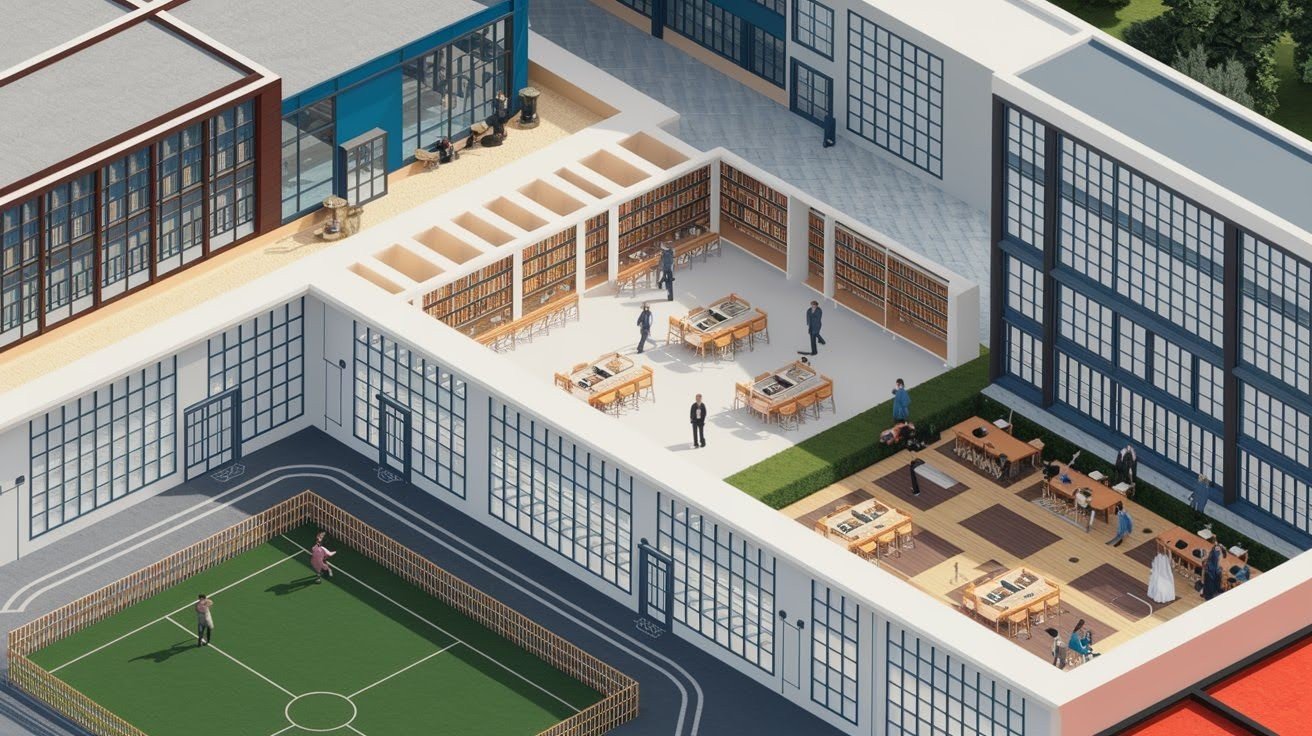
Schools, colleges, and universities create spaces for learning and growth. These buildings must accommodate students of different ages and various subjects.
Classrooms need good lighting, acoustics, and flexible seating arrangements. Science labs require special ventilation, water connections, and safety equipment. Libraries offer quiet study areas with extensive shelving and computer access.
Hallways are wider than typical buildings to handle crowds of students moving between classes. Cafeterias, gymnasiums, and auditoriums provide spaces for meals, sports, and gatherings. Security systems and controlled access protect students and staff.
Many schools also include outdoor spaces like playgrounds, sports fields, and courtyards that extend learning beyond classroom walls.
14. Healthcare Facilities
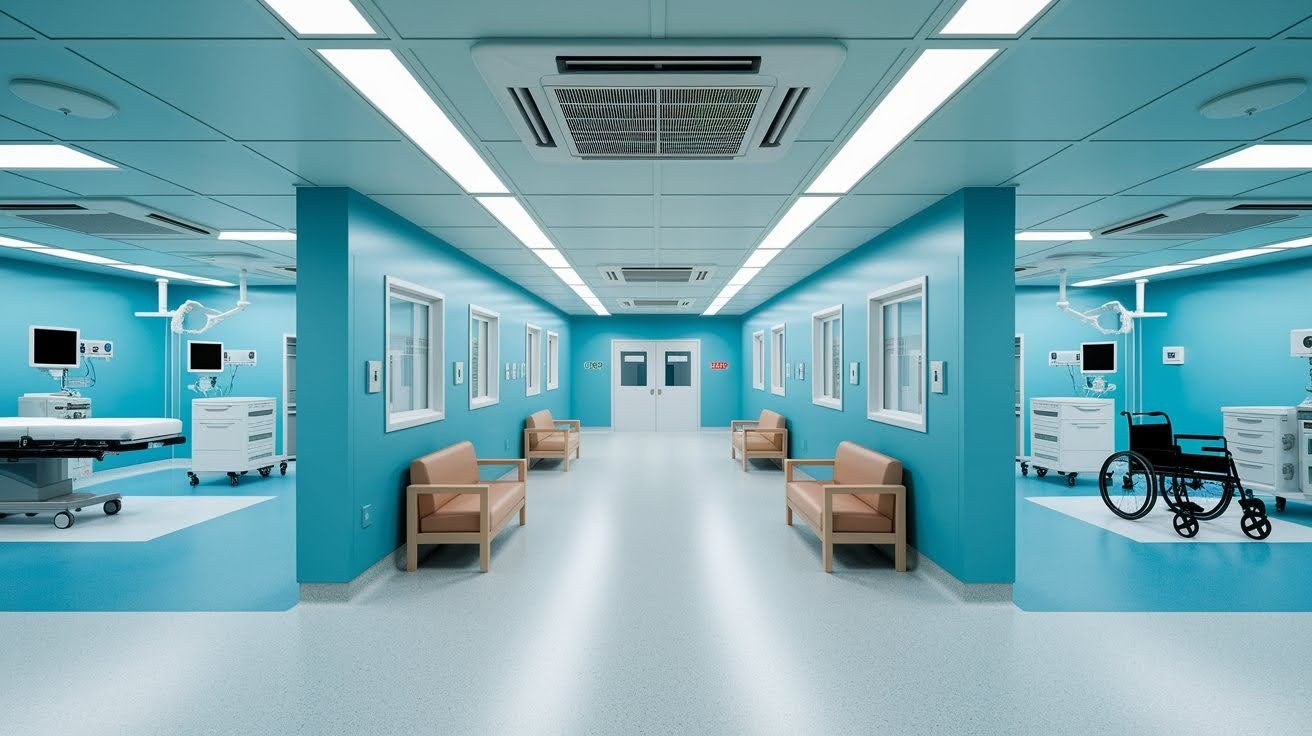
Hospitals, clinics, and nursing homes focus on patient care and medical treatment. These buildings prioritize cleanliness, safety, and efficient workflows.
Operating rooms need specialized air filtration systems and sterile environments. Patient rooms require easy access for medical equipment and staff. Wide corridors accommodate wheelchairs, stretchers, and medical carts.
Ventilation systems prevent the spread of infections between rooms. Non-slip flooring reduces accidents, while rounded corners on walls and furniture prevent injuries. Emergency power systems keep critical equipment running during outages.
Separate entrances often divide emergency services from regular patient care to manage traffic flow effectively.
15. Government Buildings
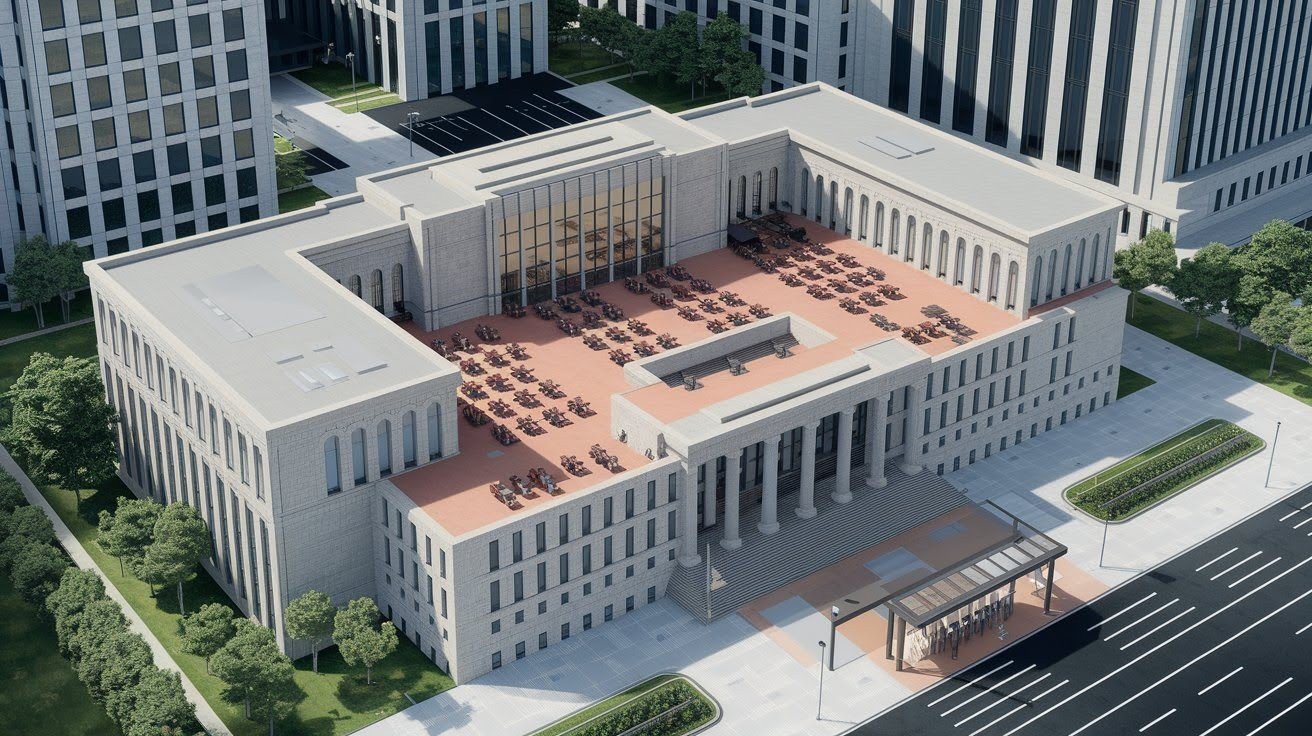
Courthouses, city halls, and administrative offices serve the public while maintaining security and order. These structures balance accessibility with protection.
Public areas like waiting rooms and hearing chambers accommodate many visitors. Private offices house staff and sensitive documents. Security checkpoints and controlled access protect both workers and important records.
Meeting rooms and council chambers include audio-visual equipment for public hearings and official proceedings. Parking areas and public transportation access help citizens reach these facilities easily.
Many government buildings also feature symbolic architecture that reflects civic pride and democratic values.
16. Hotel Buildings
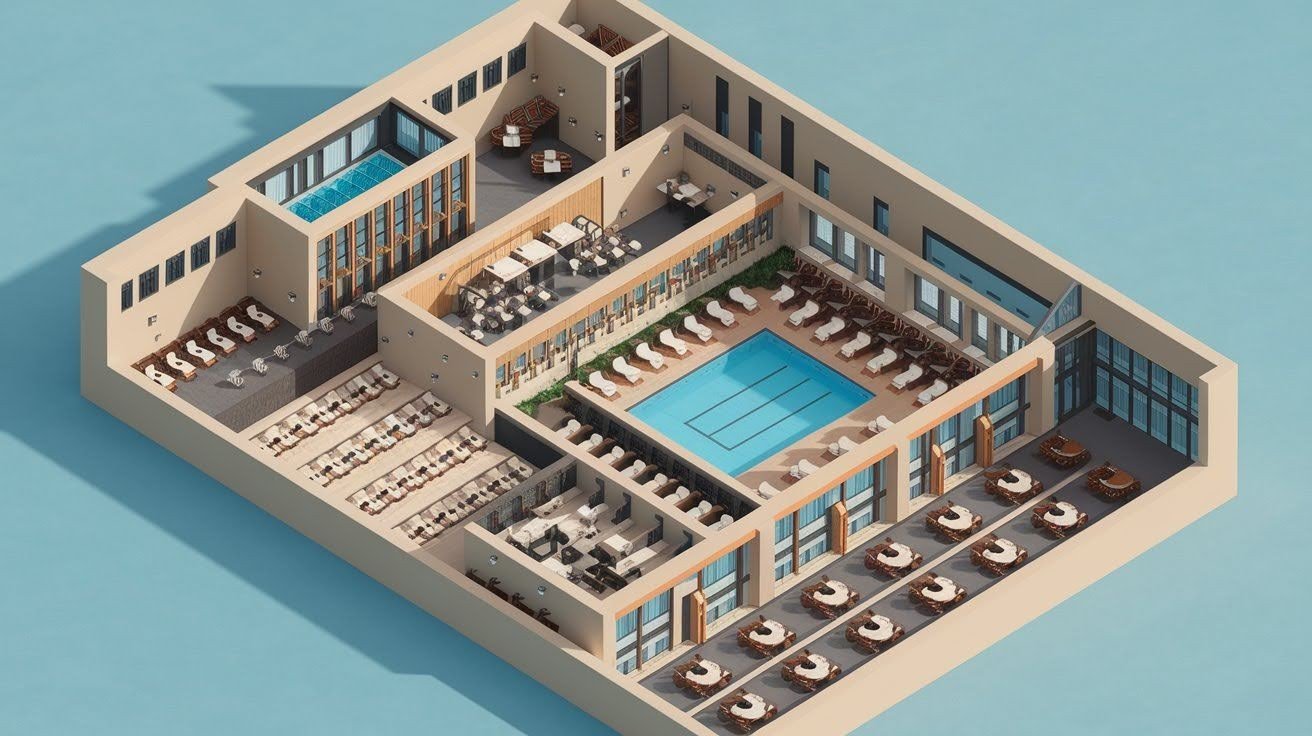
Hotels range from small bed-and-breakfasts to massive resort complexes. All focus on providing comfortable temporary housing for travelers.
Guest rooms include private bathrooms, sleeping areas, and basic amenities. Common spaces like lobbies, restaurants, and conference rooms serve multiple guests. Service areas house laundry facilities, kitchens, and storage that guests never see.
Elevators, wide hallways, and clear signage help guests move around easily. Sound insulation between rooms ensures privacy and quiet. Many hotels also include recreational facilities like pools, fitness centers, and business centers.
17. Green Buildings
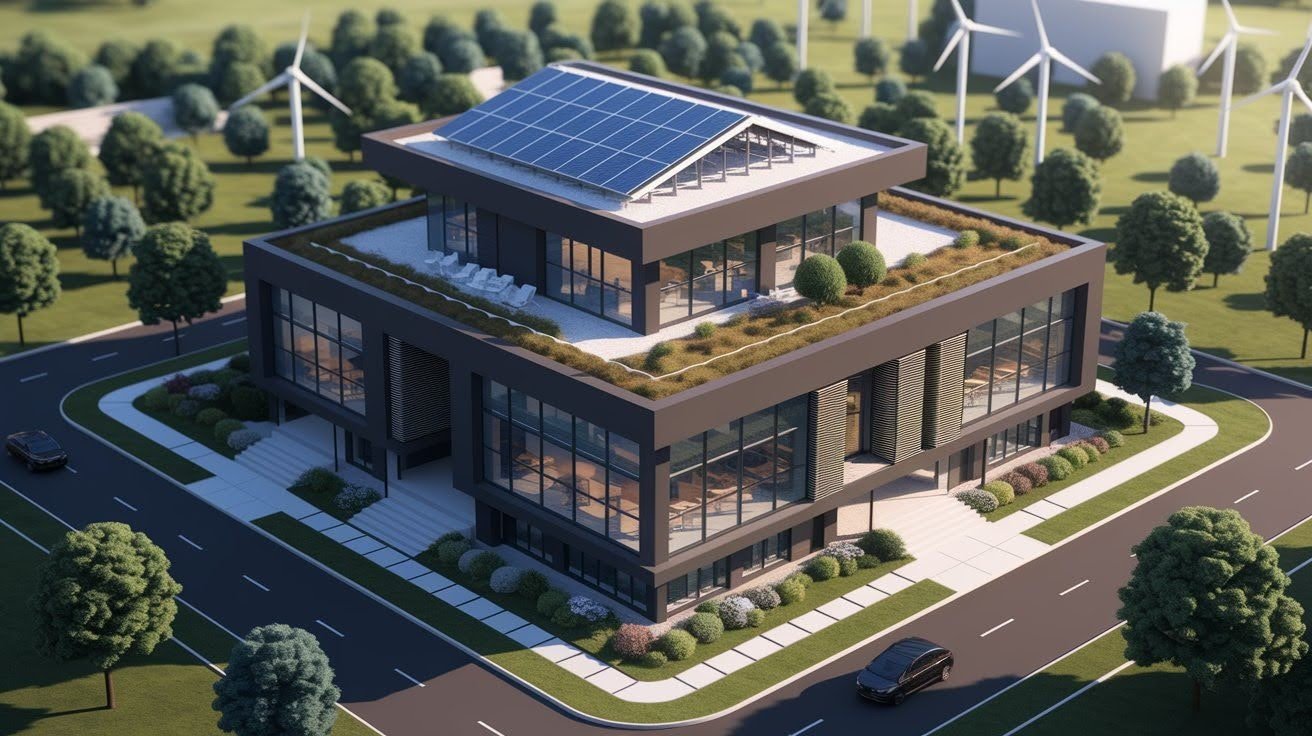
Green buildings minimize environmental impact through sustainable design and technology. These structures focus on energy efficiency and resource conservation.
Solar panels on rooftops generate clean electricity. Rainwater collection systems reduce water waste. High-performance insulation and windows cut heating and cooling costs.
Natural lighting reduces electricity needs during daytime hours. Efficient HVAC systems maintain comfort while using less energy. Some buildings include green roofs with plants that provide insulation and manage stormwater.
These features often cost more upfront but save money over time through reduced utility bills and maintenance costs.
Popular Residential Building Types in the USA
American homes reflect the country’s diverse history, climate, and lifestyle preferences. From coast to coast, different housing styles have developed to meet local needs and express regional character. Here are the most common residential building types you’ll find across the United States.
18. Tiny Homes

Tiny homes pack everything you need into spaces under 500 square feet. These compact houses have gained popularity among people seeking simpler, more affordable living.
Most tiny homes include a sleeping loft, small kitchen, bathroom, and multipurpose living area. Built-in storage maximizes every inch of space. Many feature fold-down tables, murphy beds, and clever organizational systems.
These homes often sit on wheels, allowing owners to relocate when needed. This mobility appeals to people who want to travel or avoid long-term commitments to one location.
Tiny homes cost much less than traditional houses. Lower utility bills, reduced maintenance, and minimal property taxes make them budget-friendly. Many owners build their own homes using standard construction techniques scaled down to fit smaller spaces.
19. Traditional American Home Styles
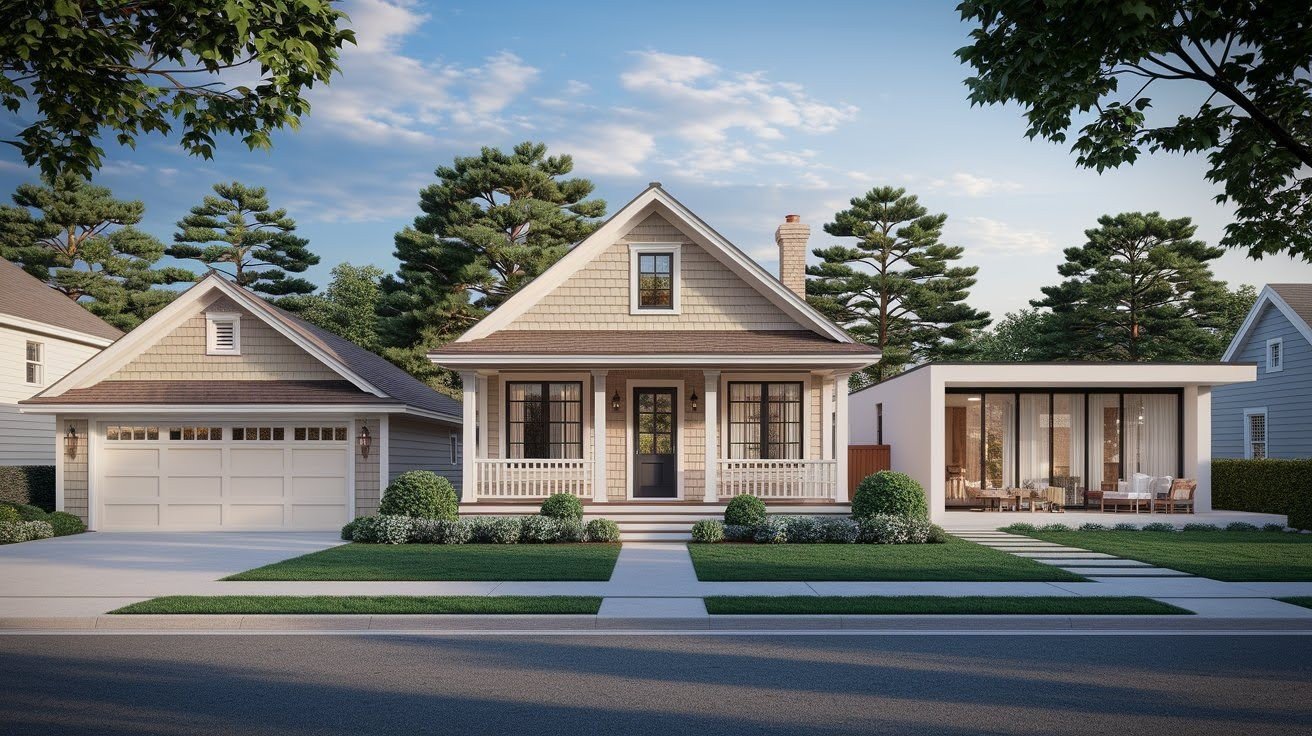
Regional home styles developed across America based on local materials, climate, and cultural influences. Each style offers distinct features and historical significance.
Ranch Homes spread horizontally across single stories. Popular in the 1950s and 1960s, these homes feature open floor plans, large windows, and attached garages. They work well for families with young children or older adults who prefer avoiding stairs.
Bungalows are small, cozy homes with front porches and simple layouts. Originally built in the early 1900s, they emphasize craftsmanship and natural materials. Most include built-in furniture and decorative woodwork.
Contemporary Homes focus on current design trends with clean lines and modern materials. Large windows, open spaces, and integration with outdoor areas define this style. They often include the latest technology and energy-efficient features.
Tips for understanding and choosing building types
For Homebuyers:
- Research local building codes and zoning laws before purchasing property
- Consider your lifestyle needs when choosing between single-story and multi-story homes
- Factor in maintenance costs for different building materials like wood versus concrete
- Check the age and condition of major systems like plumbing and electrical
For Builders and Developers:
- Match building materials to local climate conditions for better durability
- Plan for future expansion when designing commercial spaces
- Include adequate parking and loading areas for business buildings
- Consider energy efficiency features to reduce long-term operating costs
For Urban Planning:
- Mix different building types to create balanced neighborhoods
- Ensure proper spacing between industrial and residential areas
- Plan for adequate infrastructure to support high-rise developments
- Include green spaces and public buildings in community designs
For Property Investors:
- Study local market demand for different building types
- Consider renovation potential when buying older structures
- Factor in location advantages for commercial versus residential properties
- Research growth trends in your target area before investing
General Building Knowledge:
- Learn basic construction terminology to communicate better with contractors
- Understand how building codes affect renovation and construction projects
- Know the difference between load-bearing and non-load-bearing walls
- Stay informed about new building technologies and sustainable practices
Conclusion
We’ve covered 19 different building types that shape our communities and daily lives. From tiny homes to towering skyscrapers, each structure serves specific purposes and reflects unique design approaches.
Understanding these building categories helps you make informed decisions about construction, real estate, and urban planning. If you’re choosing a home, designing a business space, or working in city development, this knowledge proves valuable.
Building diversity strengthens our communities. Different types of structures create vibrant neighborhoods that meet various needs. Residential areas provide homes, commercial districts offer services, and industrial zones support manufacturing.
Smart planning considers all these building types together. Mixed-use developments combine housing, shops, and offices in walkable areas. This approach creates more sustainable, livable communities. The next time you walk through your neighborhood, notice the different building types around you. Each one tells a story about function, history, and human needs.
Frequently Asked Questions
What is the difference between residential and commercial buildings?
Residential buildings are designed for people to live in, like houses and apartments. Commercial buildings house businesses and serve customers, such as offices, stores, and restaurants.
How do I identify different architectural styles?
Look at key features like rooflines, windows, and materials. Traditional styles have ornate details and natural materials, while modern styles focus on clean lines and glass.
What materials are best for building in different climates?
Wood works well in temperate areas with forests, while concrete suits areas with extreme weather. Steel frames handle earthquakes and high winds better than other materials.
Why do cities have height restrictions for buildings?
Height limits protect neighborhood character and prevent overcrowding of infrastructure. They also ensure adequate sunlight reaches streets and maintain views for existing residents.
What makes a building “green” or environmentally friendly?
Green buildings use energy-efficient systems like solar panels and high-performance insulation. They also incorporate water-saving features and sustainable materials to reduce environmental impact.


